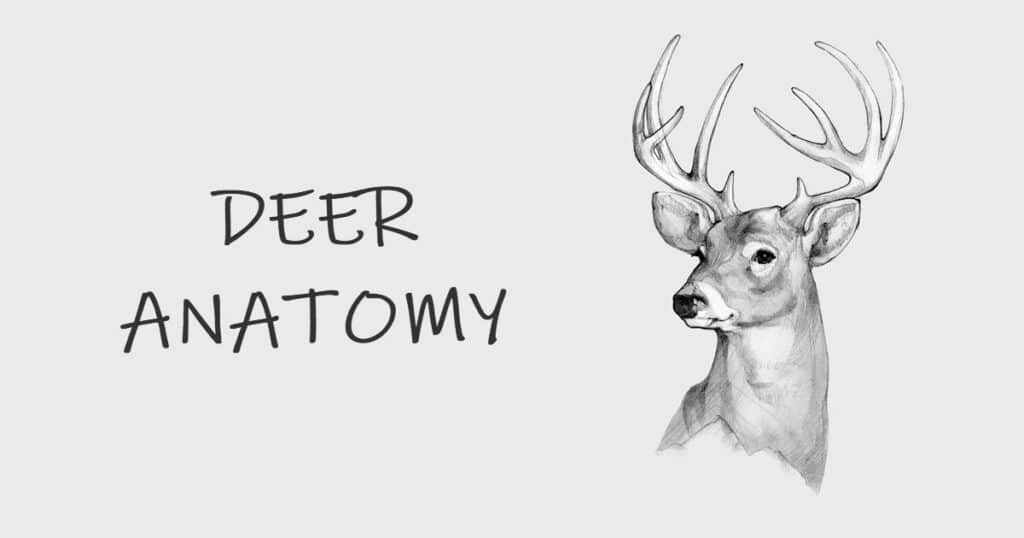Want to be a deer hunter? You’ve got to understand deer anatomy. Understanding this animal’s anatomy will help you kill a deer with a clean shot. Anatomy knowledge will also help you figure out what you want to do with the deer after a successful hunt. Even if you aren’t a hunter, knowing a few basic things about deer anatomy can be handy. Let’s find out more.
This is our essential guide to the basics of deer anatomy. You’ll also learn about some of the differences between deer anatomy and human anatomy.
Key Organs in Deer Anatomy
The heart, brain, and lungs are the main organs in a deer’s anatomy. The animal needs these organs to survive.
For hunters, these are the most important organs.
As a hunter, it’s your ethical responsibility to kill the deer as quickly and humanely as possible. Ideally, you should be able to kill a deer with a single shot.
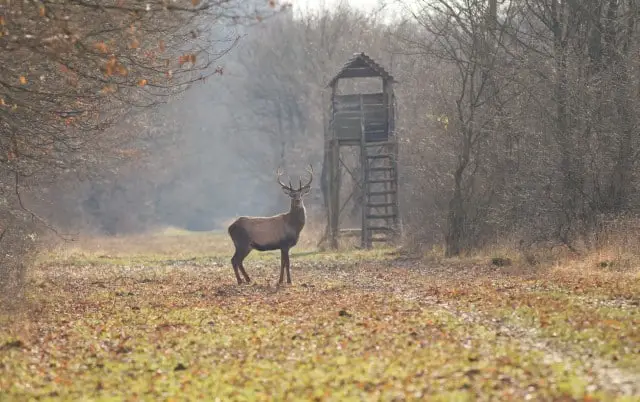
Targeting the heart or lungs will kill the animal much faster than a shot to anywhere else on the body.
That’s why it’s important to be able to locate the heart and lungs.
But what about the brain? It’s difficult to shoot the brain cleanly, so you usually shouldn’t try.
You’ll probably end up hitting the animal’s jaw if you try to shoot the brain. This will cause inhumane pain for the animal.
Not only is the head a small target, the deer’s skull does a good job of protecting the brain.
These factors mean that a brain shot is more likely to result in extra pain and suffering for the animal. That’s why they’re unethical in most cases.
You should target the heart and lungs instead. They’re an easier target, and a good shot to the lungs or heart will do minimal damage to potential meat.
Like humans, deer have a heart and two lungs that are located in their chest.
A cervid’s heart and lungs are located below the neck. The ribs and some other bones surround these organs.
Deer Bones
Locating the organs is crucial to successful hunting but understanding a deer’s skeleton is also important.
After all, the bones protect the organs, so it’s good to know where they are and how they work.
A deer’s skeletal system has most of the same bones as a human skeleton. Deer have a skull, spine, pelvis, and ribs.
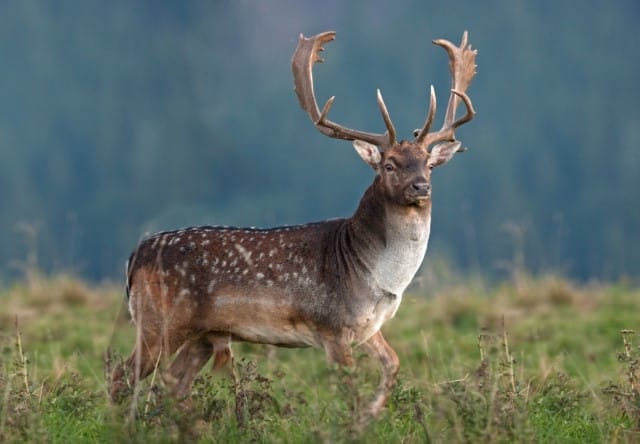
The main difference between humans and deer is that humans walk upright whereas deer walk on four feet. This means the cervid spine runs horizontally as opposed to vertically.
An adult deer has over 350 bones. For comparison, humans have 206 bones.
The bones that protect a deer’s most important organs are the skull, ribs, and scapula.
Deer antlers are made of bone. But the antlers will fall off and re-grow every year, unlike the other bones in a deer’s body.
Male deer primarily use their antlers during the rut (mating season).
But let’s get back to the bones inside the deer’s body. Don’t immediately throw these away after field dressing.
There are several things you can do with deer bones.
For example, you can boil down the bones the same way you would beef or chicken bones to make a yummy venison stock for a stew.
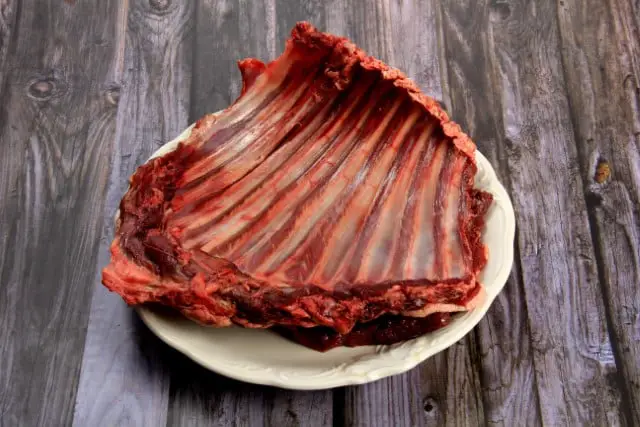
Alternatively, you can shape the bones to make a variety of tools (like knives or fish hooks).
Or, if you need some new décor, a deer skull and antlers are a great way to give your home a bit of rustic character.
A deer’s scapula and ribs do a good job of protecting a deer in the wild, but they leave a good opening for an arrow or bullet. That’s why it’s so much easier (and more humane) to target the heart and lungs as opposed to the brain.
Deer Vascular System
The vascular system is responsible for pumping and transporting blood throughout the body. As is the case in humans, the central organ of the vascular system is the heart.
If the heart stops beating, blood is going to stop pumping. A shot to the heart will probably kill a deer, but not necessarily instantly.
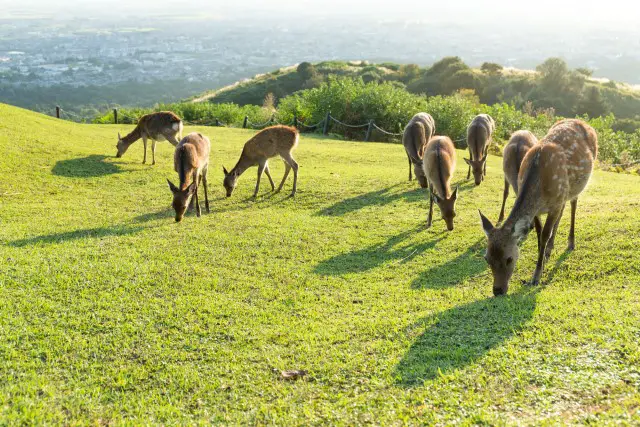
Even a deer that has taken a lethal shot can run off for several hundred yards.
If this happens, you’ll have to track it. This is where the blood trail comes in.
The blood trail consists of the blood dripped or smeared from the animal that will lead you to the spot where the deer ultimately perishes from the shot.
There is an art to following a blood trail, and it’s important not to leave the deer’s carcass out in the woods.
Unfortunately, a heart shot doesn’t always leave a very good blood trail. Since the heart is fairly small relative to the lungs, it can also be more difficult to aim at.
That’s why aiming for the deer’s lungs might be a better idea unless you have a clear shot.
Depending on whether you’re using a bow or a gun, there is a fairly good chance that a shot to the heart will also pierce the lungs. This will leave a better blood trail and will probably kill the deer faster.
Deer Respiratory System
The respiratory system transports oxygen throughout the deer’s body.
Oxygen comes in through the mouth or nose and goes down to the lungs. From the lungs, the oxygen will be circulated through the blood.
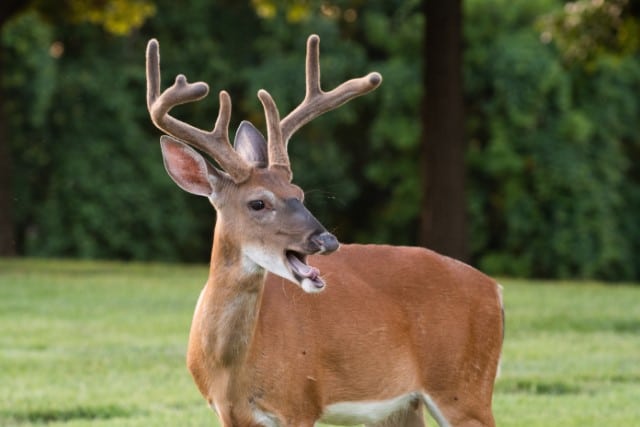
Deer can’t survive without oxygen, so without a good set of lungs, a deer isn’t going to make it very far. The lungs are an ideal target since there are two of them and they’re bigger than the heart or brain.
The lungs are the least protected of all the vital organs. They’re shielded by the ribs.
Ribs offer less protection than other bones because of the spaces between them. Also, rib bones aren’t as strong as some other bones in the deer’s body.
Deer Muscular System
A deer’s muscular system is intricately connected with its key organs. A deer isn’t going to be able to use its muscles well without a healthy respiratory system.
The main function of muscles is movement. Deer would be unable to move without muscles.
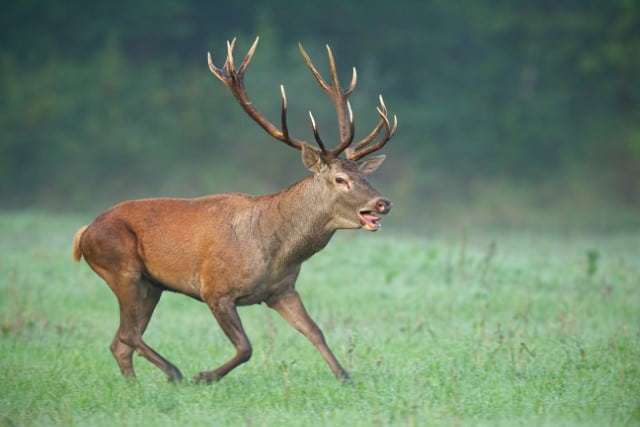
Since the muscles surround the bones, they also provide another layer of protection for the vital organs.
A deer’s muscles are probably the first thing you’re going to encounter when you cut open the carcass. Knowledge of the different muscles in the deer’s body is essential when it comes to butchering the meat.
The names for meat pieces are not the same as the scientific name for the muscles while they are in the animal, but they are a lot easier to name.
One of the most desired venison parts is the backstrap, which is found underneath the back of the deer right above the spine. Towards the back of the deer above the hind legs, you’ll find the tenderloins, hindquarters, and rear shanks.
The ribs are coveted for obvious reasons. Also, you can use the meat close to the ribs to make brisket.
The muscles in the neck and shoulder can also be used for meat.
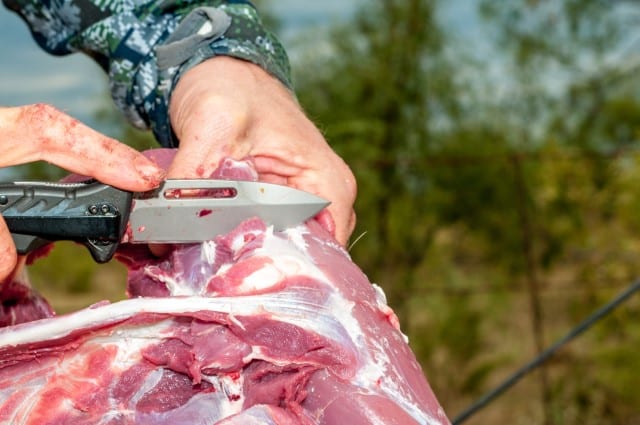
In fact, you can use just about every internal part of the deer for meat. You can use the less desirable parts to make sausages or venison burgers.
If you don’t want to eat some parts of the deer, you can sell them to a butcher.
Do you like blood sausages? You can use deer blood to make them.
Deer Digestive System
Deer aren’t picky eaters, especially when food sources are scarce. However, there are certain foods that they prefer and will usually focus on if there are ample supplies.
Deer are herbivores, meaning they only eat plants. Leaves, berries, and shrubs are a deer’s favorite foods.
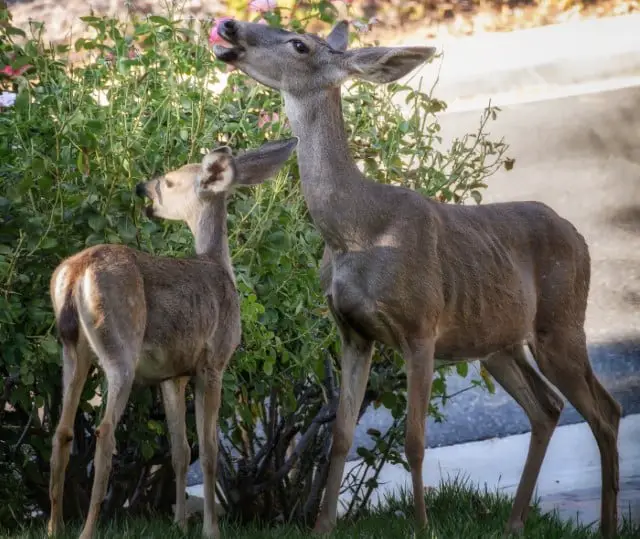
Digestion starts in the mouth. A deer’s teeth are well-designed for chewing and processing plants. This is why a deer’s teeth are flat, unlike the pointy teeth we see in carnivores.
Once a deer has eaten its food, the food will travel down to the stomach.
A deer’s digestive system performs the rumination process. This is similar to a cow.
There are four parts of a deer’s stomach, and the main parts are the rumen and the reticulum.
If a deer eats a piece of grass, the grass will be ground up into tiny parts and then sent to the rumen to go through a micro-fermentation process that will break down the cell walls of the plant.
This is important because the cell walls would otherwise block the nutrients that the deer needs from the grass.
At this point, the deer will spit its food back up and chew it again.
Why Do Deer Chew Their Food Twice?
Why? It’s because the food is still too complex for the deer’s body to retrieve the nutrients it needs even after the food has been broken up and processed.
We sometimes say that a deer re-chewing its food is “chewing the cud.”
After the deer has chewed its food for the second time, it will return to the digestive system to what is called the true stomach, the abomasum.
It’s at this point that the food is actually processed into nutrients.
Deer Intestinal System
What goes into a deer must eventually come out. Obviously, deer can’t hold onto their food or water forever.
Once a deer’s body has processed the essential nutrients or received enough hydration, the waste will eventually be expelled.
Like humans, deer have intestines. Though some nutrient processing happens in the stomach, more of it occurs in the intestines.
Deer intestines look very much like human intestines. They’re wrapped in tubes close to the deer’s stomach.
If you were to remove a deer’s intestines and measure them from one end to the other, they would measure about 28 feet long.
At the end of the digestive process, a deer will drop its food either in the form of deer droppings or urine. Deer droppings can be a good clue as to the health of a deer’s diet.
Unless you’re a veterinarian, you’re probably more interested in deer droppings for what they can tell you about deer tracking.
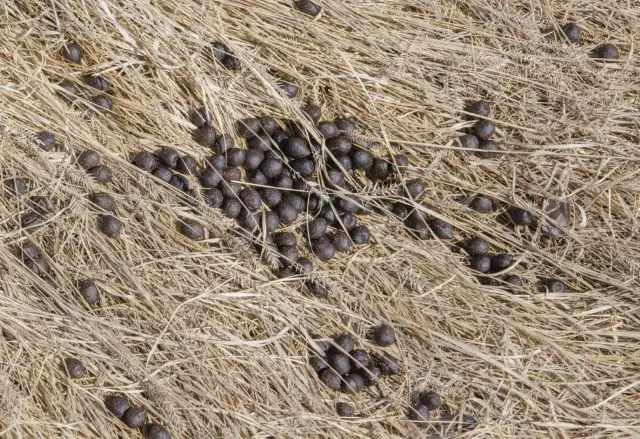
Fresh deer droppings will be wetter and have a darker color than old droppings, suggesting that the deer is not too far off.
Never shoot a deer in the stomach and intestinal system area. The animal will suffer far more than necessary.
White-Tailed Deer Anatomy
The deer anatomy fundamentals we talked about here apply to a wide range of deer species, including the white-tailed deer.
Talk to local hunters or wildlife experts on the deer species in your region.
The white-tailed deer is the most common deer species in North America. If you’re hunting in the United States, you’re probably hunting for white-tailed deer.
Differences in Male and Female Deer Anatomy in White-Tailed Deer
There are significant anatomical differences between male and female deer.
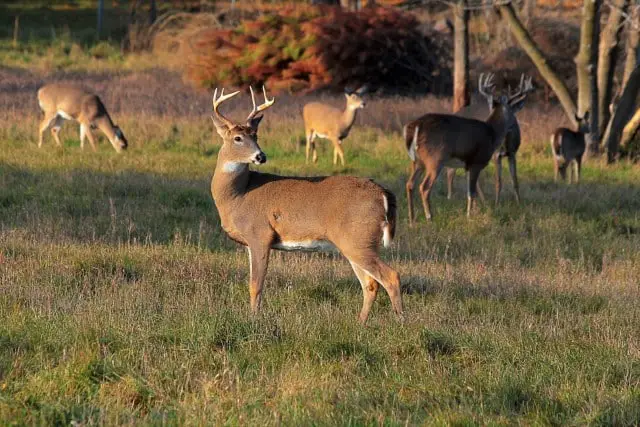
The most obvious example is the reproductive organs. As this is self-explanatory, we won’t go over that here.
Instead, we’ll talk about physical features that you can see from a distance.
Male White-Tailed Deer
Male deer (also known as bucks) are larger than female deer (also known as does). In most cervid species, only males have antlers.
Female White-Tailed Deer
Female white-tailed deer don’t have antlers. They’re also significantly smaller than male deer.
An adult doe usually measures about three feet from the shoulder to the ground. They may weigh as much as 250 pounds.
Final Thoughts: Deer Anatomy
Just like any other mammal, deer have a complex anatomy. Deer hunters must understand deer organs.
The key organs in a deer’s anatomy are the heart, lungs, and brain.
Hunters should target the heart and lungs. Avoid head shots.
Make sure you understand all these things before you head out on the field. You should have knowledge of the deer’s:
- Vital organs
- Bones
- Vascular system
- Respiratory system
- Muscles
- Digestive system
You should also review the differences between male and female white-tailed deer that we have discussed here.

